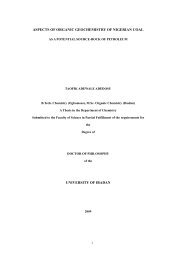aspects of organic geochemistry of nigerian coal university of ibadan
aspects of organic geochemistry of nigerian coal university of ibadan
aspects of organic geochemistry of nigerian coal university of ibadan
You also want an ePaper? Increase the reach of your titles
YUMPU automatically turns print PDFs into web optimized ePapers that Google loves.
Abundant lycopanes have been reported in hypersaline euxinic settings (Grice et al.,<br />
1998) and in mesosaline carbonates, such as the Jurassic Malm stage carbonates<br />
(Schwark et al., 1998). Lycopane has been proposed to be a bacterial marker derived<br />
from reduction <strong>of</strong> lycopene (Killops and Killops, 2005).<br />
Squalene (structure V) serves as precursor to polycyclic terpenoids, steroids and<br />
carotenoids. Squalene is a major lipid produced by methanogenic, thermophillic and<br />
thermoacidophilic archaea. Abundant squalane, a saturated C30 isoprenoidal alkane,<br />
may represent a direct archaebacterial input (Matsumoto and Watanuki, 1990) or<br />
derive from diagenetic reduction <strong>of</strong> squalene, which occur in a variety <strong>of</strong> organisms.<br />
Squalane has been used as a biomarker for archaea and hypersaline depositional<br />
environments (Ten Haven and Rulkotter, 1988).<br />
2.1.3 n-Alkanol, Alkanoic acids and Fatty acids<br />
Aliphatic wax lipids (n-alkanols, n-alkanoic acids, fatty acids) in the range <strong>of</strong><br />
C22-C32 were identified as the major extractable components <strong>of</strong> angiosperm leaves,<br />
barks and roots (Huang et al., 1995; Lockheart et al., 2000; Kogel-Knaber 2002;<br />
Yuang and Huang, 2003). Similar distributions have been reported in sediments and<br />
macr<strong>of</strong>ossils (Logan and Eglinton, 1994; Huang et al., 1995, 1996; Lockheart et al.,<br />
2000). The functionalized lipids are partly degraded during diagenesis (Bechtel et al.,<br />
2001). The wax esters, their hydrolysis products, and the free alkanol and fatty acids<br />
are preferentially degraded to aldehyde, ketones and alkanes by microorganisms<br />
(Puttmann and Bracke, 1995). These degradation pathways favor short chain (


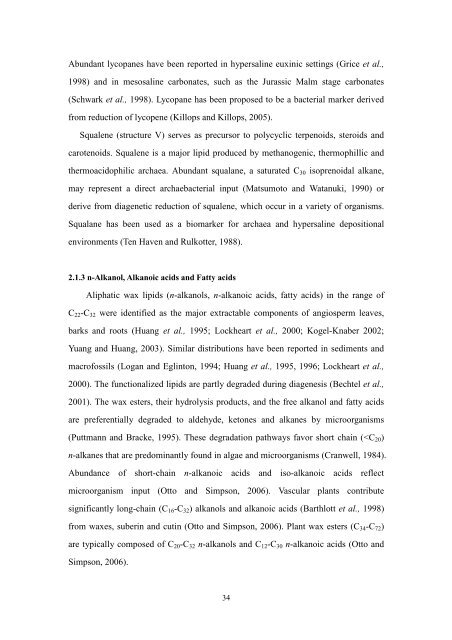

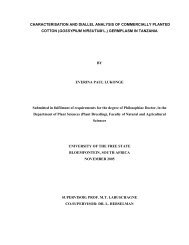


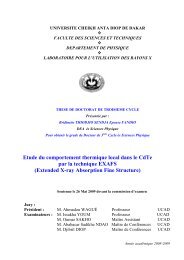
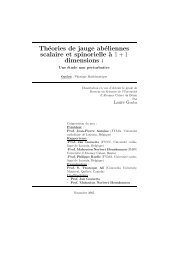


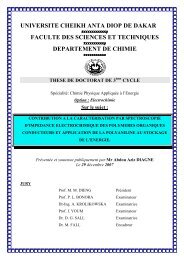
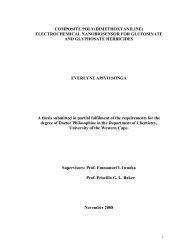


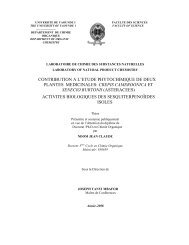
![SYNTHESIS AND ANTI-HIV ACTIVITY OF [d4U]-SPACER-[HI-236 ...](https://img.yumpu.com/30883288/1/190x245/synthesis-and-anti-hiv-activity-of-d4u-spacer-hi-236-.jpg?quality=85)
